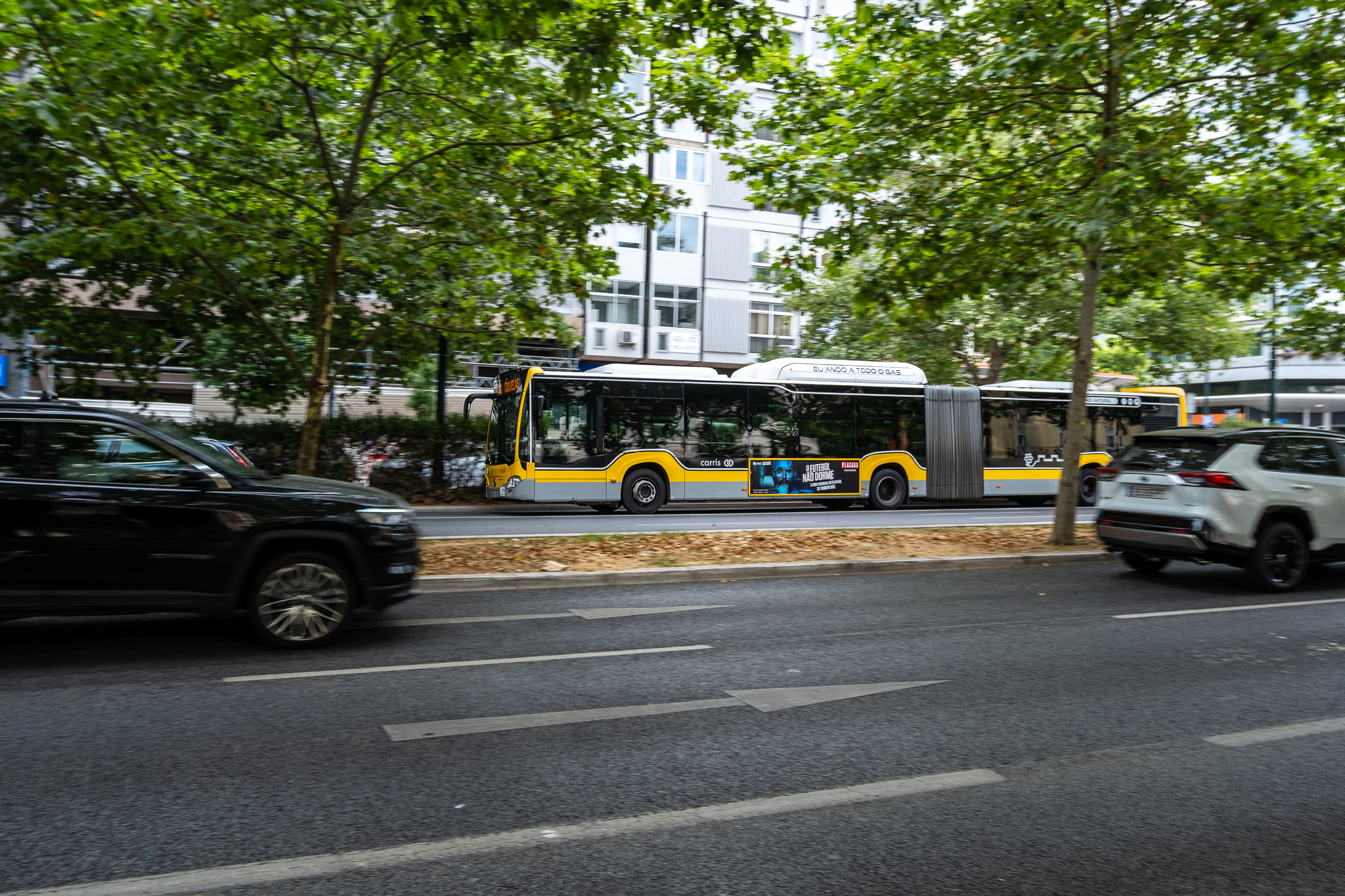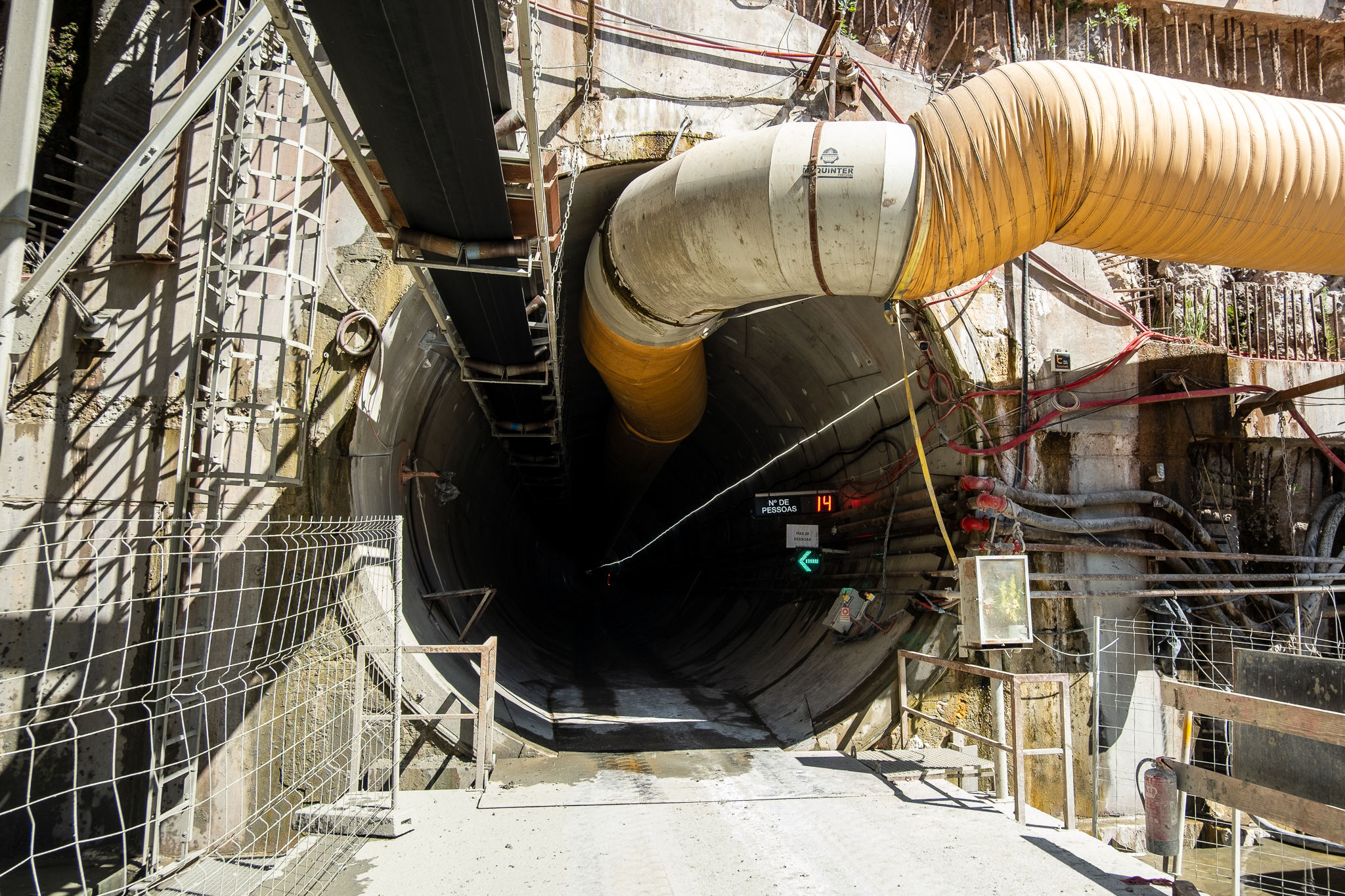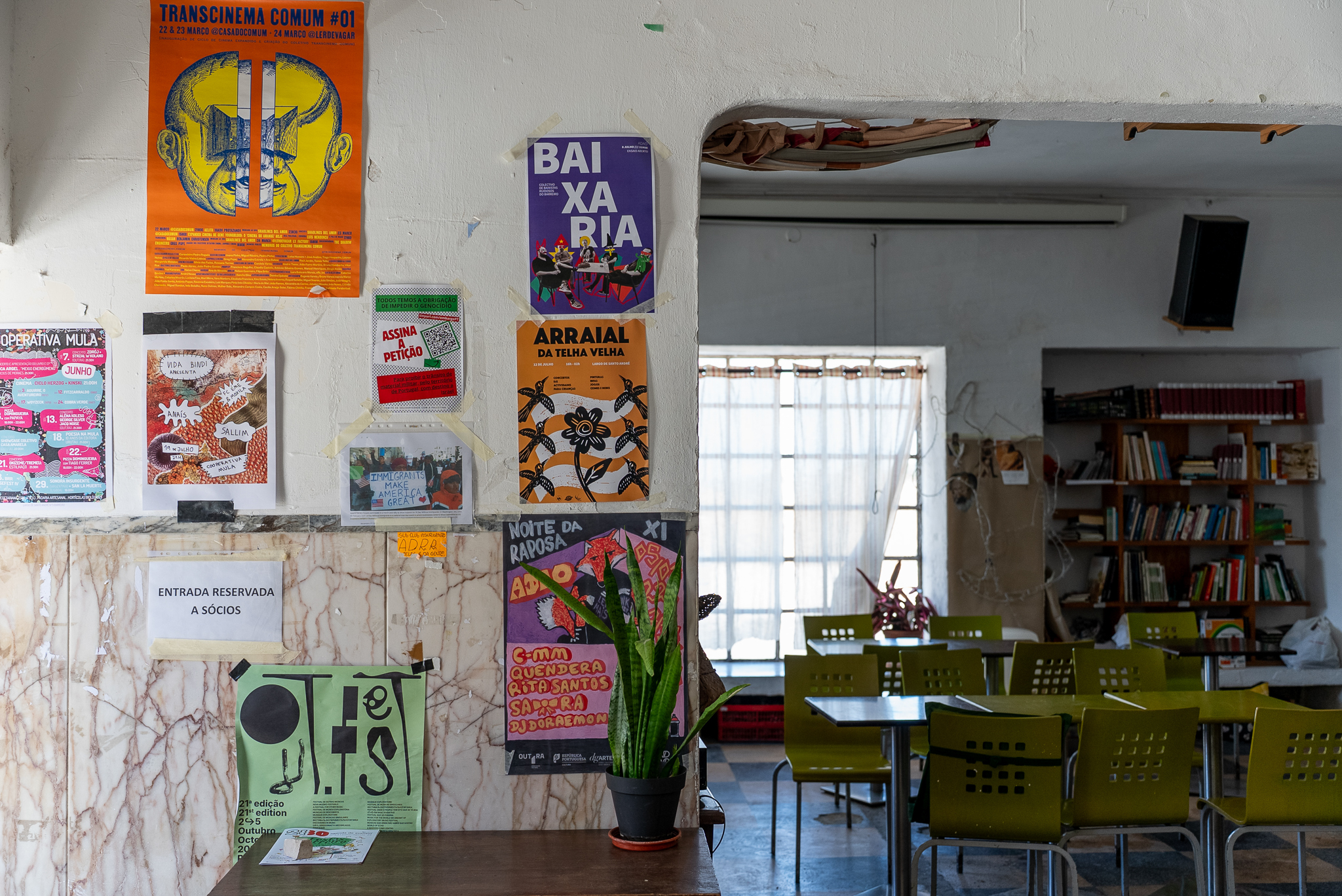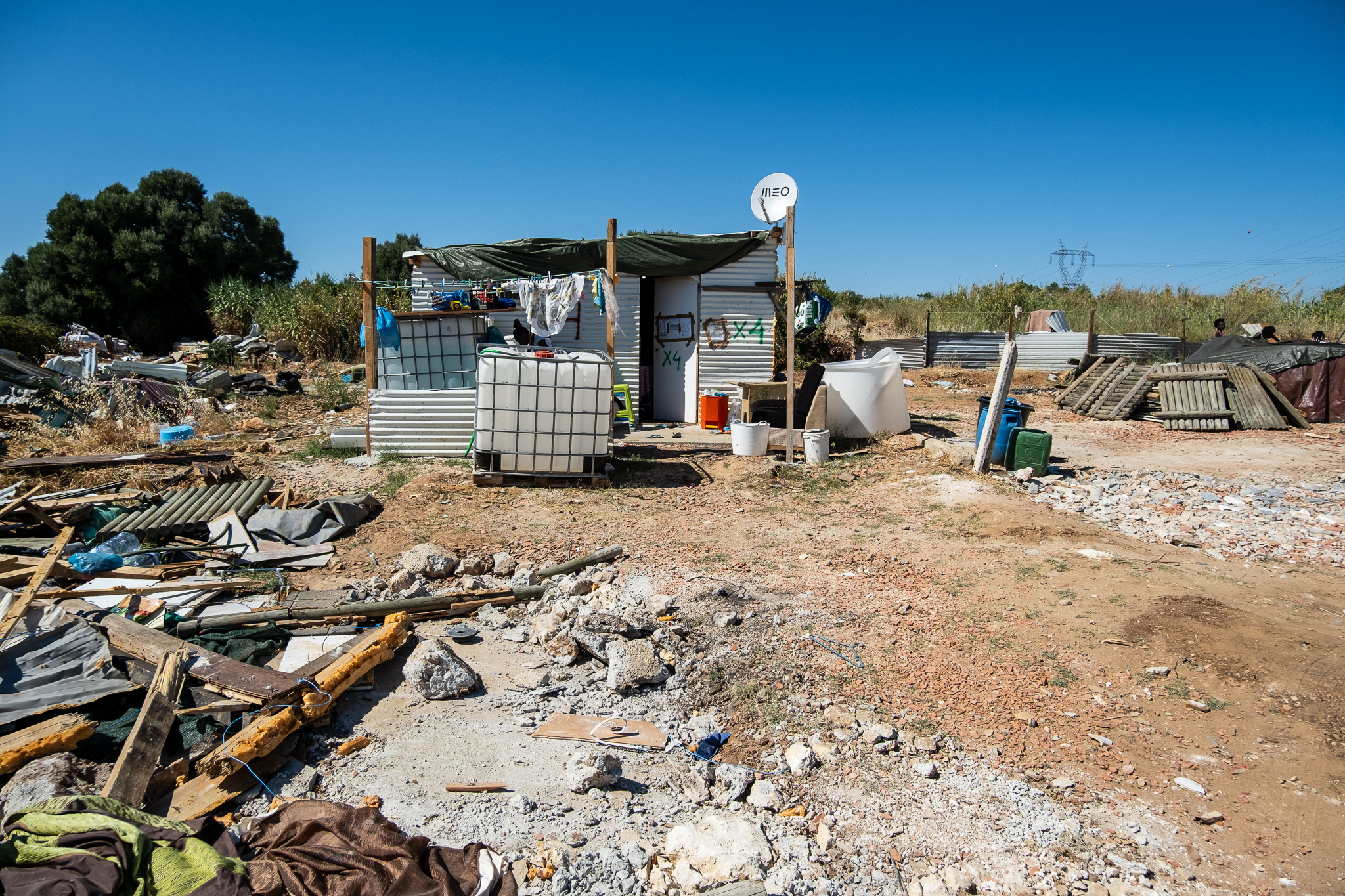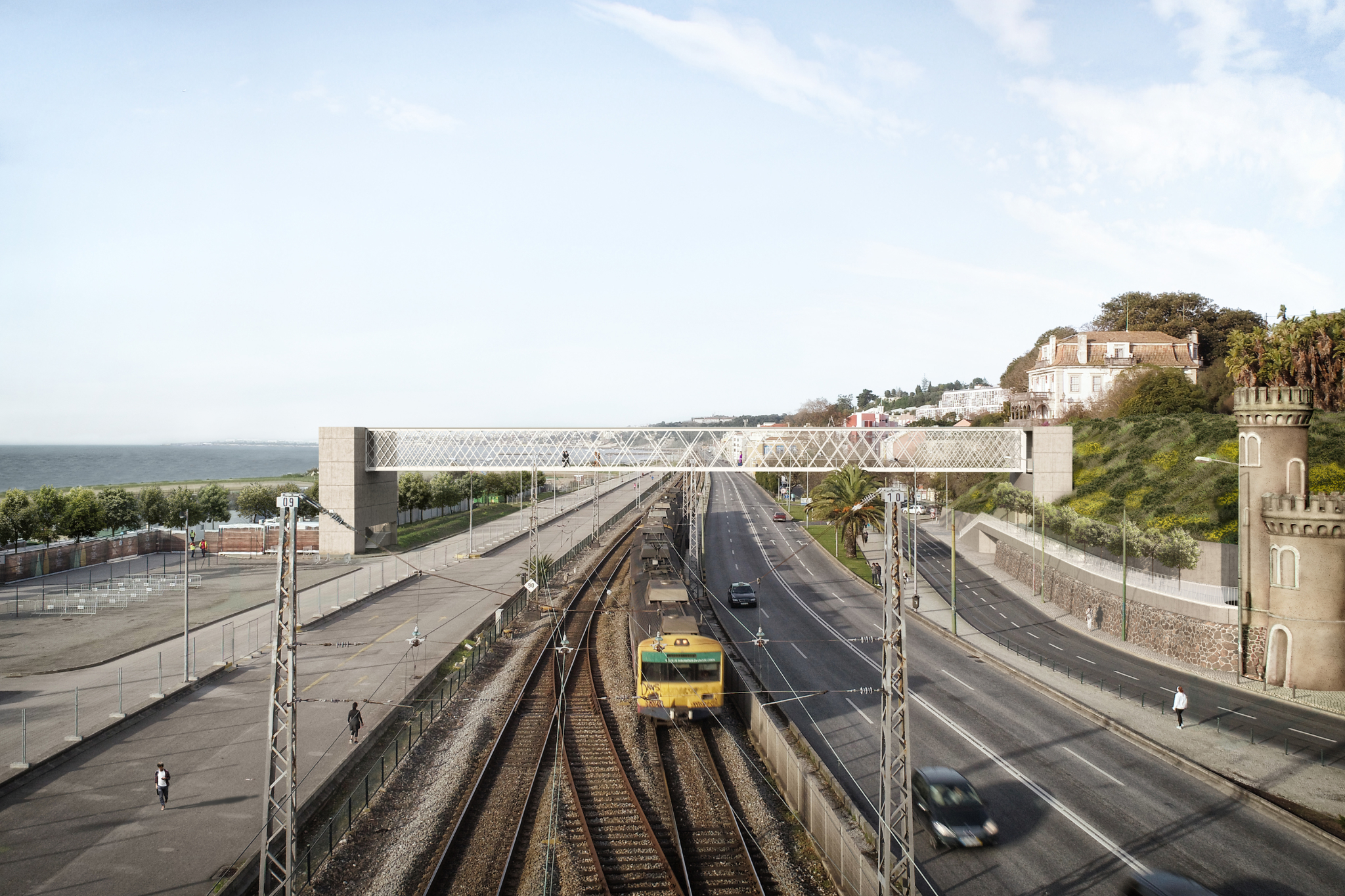In the morning and at the end of the day, the Sintra Line is crowded with passengers, who move from the outskirts to the city and vice-versa. But what about inside Lisbon? What opportunities can the train present for urban travel? And for long-distance travel?
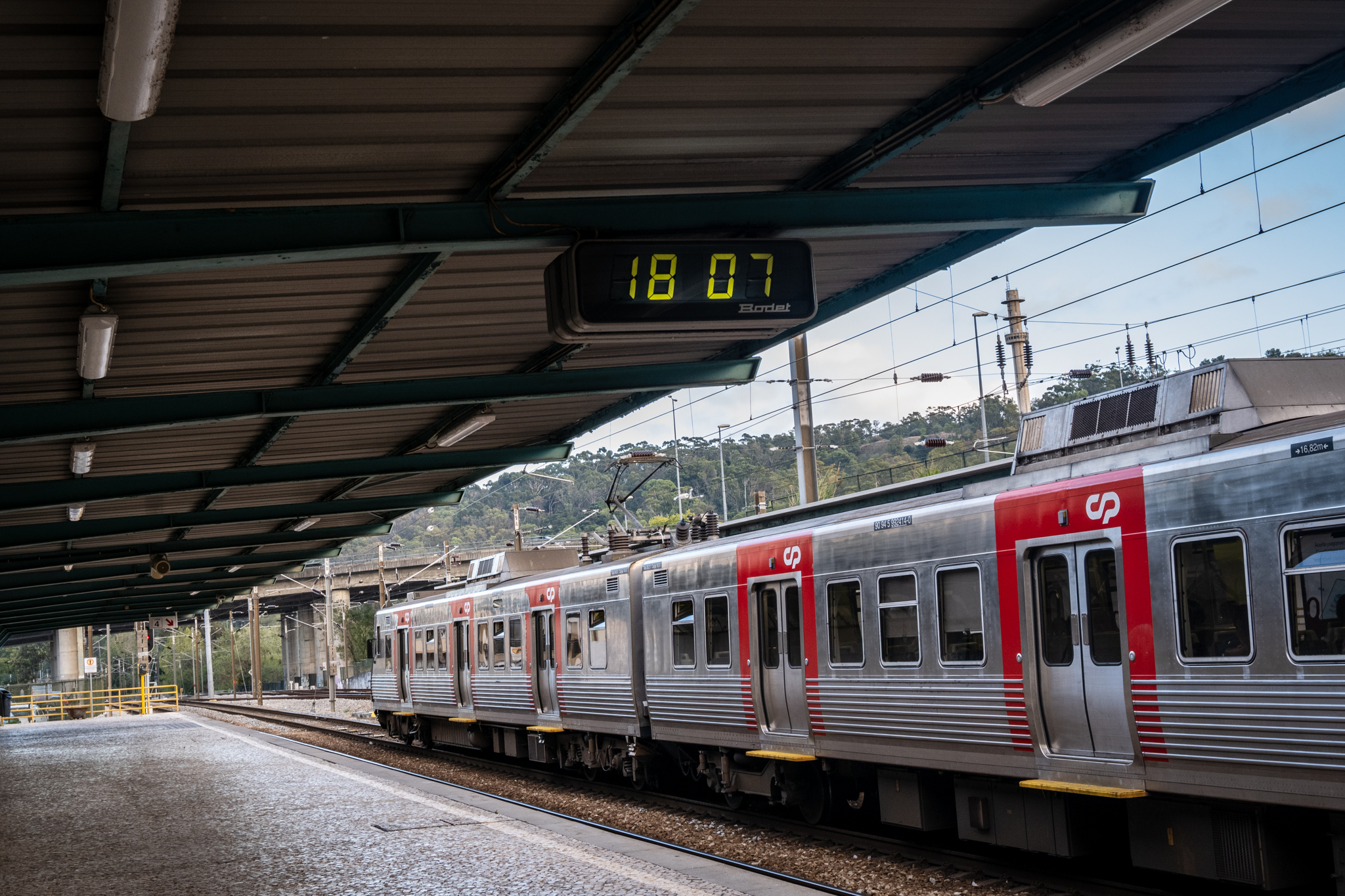
It takes four minutes from Avenida de Roma or Areeiro to Braço de Prata, and three minutes to Parque das Nações. Benfica is very close to downtown, and from Entrecampos to Alcântara it is only 13 minutes. The train lines that run through Lisbon end up being forgotten by many people who don't see them in the same way that the Metro lines do.But the more traditional railroad can be an excellent alternative for reaching the destination we want.
Lisbon has 17 train stations and stops: Alcântara-Mar, Alcântara-Terra, Belém, Benfica, Braço de Prata, Cais do Sodré, Campolide, Chelas, Entrecampos, Marvila, Moscavide, Oriente, Roma-Areeiro, Rossio, Santa Apolónia, Santos and Sete Rios. Looking at regional and long-distance services, Santa Apolónia and Oriente are the main stations in the city, but all the others allow internal connections that serve the city and the outskirts.
When the pass became part of the train
In 2012, the Navegante pass was created in Lisbon, integrating Carris, Metro de Lisboa and CP in the same monthly price in its urban offer. For the first time, urban trains could be used in the city of Lisbon as an alternative to other services, bringing closer some areas not covered by the Metro service.
A paradigmatic case is Benfica. Although there is a subway station in the parish in the Colombo area (Colégio Militar/Luz), in the heart of Benfica the most appropriate transportation is the train. From Benfica station you can reach Rossio, or downtown, in less than 15 minutes by train. A bus trip between those two points can take twice as long or even longer. Already from Alcântara, Where the subway network doesn't reach either, it is possible to quickly reach the city's work centers without using the trains that run along the so-called Linha de Cintura - a true circular railway in the city that passes through stations such as Sete Rios and Entrecampos.

In 2019, the Navegante pass was extended to all 18 municipalities of the Lisbon Metropolitan Area (AML) and the "Metropolitan" mode was createdThe redesign of the Navegante, allowing its use throughout the whole of the Lisbon Metropolitan Area. With this reformulation of the Navegante, the Fertagus service is now also included in the monthly fee, so that rail connections inside and outside Lisbon have become even more important in urban mobility choices.
The invisible line that goes around the city
It is called the "Linha de Cintura" and it encircles Lisbon, connecting the different railway lines that serve the city: at Sete Rios, it connects to the Sintra Line and allows trains to and from that municipality to reach the Oriente; in the Alcântara area, it connects indirectly to the Cascais Line; It has connections with the North, West and South Lines, is crossed by trains from Azambuja and, with the future Third Crossing of the Tagus (TTT), can connect to the Alentejo Line which today begins at Barreiro, passes through Beja and goes on to Funcheira (and which does not have an active rail service along its entire length today).

The Belt Line was inaugurated in 1888, was once known as the Lisbon Belt Line and presents a rail traffic volume exceeding 30,000 train passages per yearaccording to Infraestruturas de Portugal. CP does not operate the Cintura Line commercially, i.e., it does not communicate it as a Line in itself, nor does it have trains operating specifically on this line. There are trains that cross the Line; therefore, the general public understands that it is traveling on the Sintra Line or the Azambuja Line but does not identify if or when it is passing through this "Belt Line".
For some time there has been talk of positioning the Belt Line as a "metro line," the "fifth metro line." The idea was shared in 2018 by the then executive led by Fernando Medina and was repeated a year later. Miguel Gaspar, the mobility councilman at the time, advocated, in 2018, the connection of the Cintura Line to the Cascais Line in Alcântara and the transformation of the former into a virtual fifth Metro line. This transformation would be mainly through communication and a fare system close to the one practiced by the Lisbon Metro. "We strongly advocate connecting the Cascais Line to the Belt Line. This would create a way for people to get to the heart of the city. This connection should be studied and this is what we have been insistently telling the government. And, on the other hand, We also defend the alignment of the fares of this line with those of the Lisbon Metro, assuming that, in practice, it works as a fifth line of the Lisbon Metro and advertising it as such“said Miguel Gaspar to newspaper O Corvo.

As early as March 2019, at a meeting of the Lisbon City Council executive the then President, Fernando Medina, stated that the release of the Navegante passes at 30 and 40 euros/month would "translate and make sense of having the railroad as the fifth metro line in the city of Lisbon" and that, for this, it would be important "the opening of the dockyards that are not activated and put them at the service of the populations" - such as the Chelas stop, deactivated in 2015, or Marvila, where few trains currently stop.
The idea of the 5th Metro Line
The Linha de Cintura also crosses all the Lisbon Metro lines, and therefore could offer a complement to the metro network. On the other hand, with a fare tariff on this rail connection similar to that of the Lisbon Metro it would be possible to make the metro reach virtually the western part of the city today, namely Alcântara, without waiting for the network expansion planned to begin only four years from now, in 2025. From Alcântara-Terra, the Belt Line stops at Campolide, Sete Rios (Blue Line connection), Entrecampos (Yellow Line), Roma-Areeiro (Green Line), Braço de Prata and Oriente (Red Line). Between Roma-Areeiro and Braço de Prata, it could also stop at Chelas and Marvila.
In Alcântara, the Linha de Cintura is connected to the Linha de Cascais through a non-electrified section that only works occasionally, and at night, with a freight service to the Port of Lisbon. Since the Avenida da Índia, Avenida Brasília and the final part of Avenida de Ceuta (known as Rua de Cascais) intersect at this point, regular rail service is complicated. The solution would have to involve either burying the rail service or creating an elevated canal. Until 2008, there was an overpass in Alcântara connecting the two stations with conveyor belts - built in 1991, it was demolished 17 years later due to the insecurity offered by the infrastructure.

For Carlos Cipriano, a journalist from Público with many years of writing about railroads, making the Cintura Line a 5th subway line "it's almost a virtual issue, at the level of the immaterial; it's not about infrastructure or the physical offer because I don't think you can put more trains there". "It is a line that is always very busy, that has a high frequency with CP and Fertagus trains, and the sum of the two offers already makes it practically a subway line. Now it is not publicized as such"., points out.
For the specialist, the Waistline "it must never cease to be a real railway line, which is what it is". Although the Belt Line is not institutionalized as such - that is, it is not communicated by CP under that name - it is a railway axis that crosses the city from one end to the other. "It serves as a congregation point for Lisbon's suburban lines - the Sintra Line and the Azambuja Line. It takes in trains from the outskirts to the city center"but also the regional ones of the West Line and the long distance ones of the South Line. E "already fulfills the function of being almost a subway line". to "anyone who wants to enter the intermediate route" between Oriente and Alcântara, "coexisting with outsiders". But, "give him that mission" in a more official way could be "burdening her even more".
A question of signage
Carlos Cipriano understands that even though he does not communicate the Belt Line as a "fifth subway line", "it would make sense to have better information, especially for those who are less familiar with Lisbon's transport system, that there is an alternative to cross the city". This could involve better signage at train stations, indicating, for example, which services and destinations can be picked up at each platform instead of just the platform numbers, but also the maps of the Lisbon Metro itself, where one could "give more dignity" to the drawing of the Beltline, which is shown in gray - to the drawing of the Beltline, which is shown in gray - to the drawing of the Beltline, which is shown in gray "a person who doesn't know Lisbon, thinks that line is not for him".
Although the new Navegante pass already allows "to walk indistinctly in the city of Lisbon"being "It doesn't matter whether you take the subway or a CP train there".However, this versatility does not apply to individual tickets - The current single-transit ticket already combines Metro and Carris, allowing travel between the two operators for one hour for 1.50 euros, and it would be enough to add CP and Fertagus to this offer. "If you're in Campo Pequeno and you want to go to Sete Rios, you have to take three metro lines. There are two transfers, whereas by train you go directly from Entrecampos to Sete Rios"explains Carlos. "So, ideally, I could have the same ticket that I already use on the Metro or Carris to make that trip." Bottom, "what I want is to have a transportation title that allows me to keep on the first train that passes by, just like I do with the subway, without looking at the color or ownership of that train, and save time to Sete Rios or Alcântara".
Rail service on the scale of the city of Lisbon and the country could be significantly improved with small interventions. An example is the Cascais Line stations with no digital display of the time until the next train is due, or whether the oncoming train is an express or one that stops at every station. Another example is the lack of clear signage at all stations in the city and suburbs about where this or that train is going - this would be easy to solve because, except in exceptional situations which could be communicated by loudspeaker to the passengers, trains to certain destinations always stop on the same line. This signage could be similar to that at subway stations, where it is easy to know which platform is where.

The architectural design of stations such as Entrecampos or Sete Rios does not make life easy for passengers. It is difficult to know where we have to go to catch this or that line, and the absence of clearer signage of the services that exist on each line further complicates the use of the station. For example, in Entrecampos, a train to Setúbal almost always stops on Line 4, as does an Intercity train heading south; it would be logical to have this indication so that a less experienced passenger isn't confused.
As Carlos Cipriano reminds us, the railway operation is more complex, compared to a subway system. "Any subway line is closed, goes from point A to B, stops at every station and doesn't collide with any others"he said. At a train station with four tracks, "the two on the left are for one direction and the two on the other side are for the other direction" e "the passenger must position himself facing the destination, the train will appear to him on the left side". On top of that, "there are trains that stop at some stations and not others, and trains that, even going in the same direction, may go to different destinations". However, there is a degree of predictability that could allow for some clearer signage - generally trains to certain destinations pass through the same place and each platform could indicate the different destinations that exist. "People who are not familiar with the transportation system could get there and know that it has trains to all those places, that it even has trains to the south bank."
Cascais line?
Eduardo Zúquete, a retired civil engineer, has a different opinion. "Considering the Beltline the 5th subway line is an extremely reductive and outdated planning exercise"he says. For the specialist, the potential of the Linha de Cintura exists in long-distance travel. When the connection between Campolide station and Pinhal Novo station was made by placing the train across the river at the end of the 20th century, the Linha de Cintura became part of the Braga-Faro axis, "who was the railroad reference figure in 1970s planning"The need for river transshipment on the Tagus disappeared. “It had been possible to take advantage of the new link, all electrified double track from Braga to Setubal, to completely rearrange the long-haul rail traffic, which did not happen."

Zúquete looks at the Cascais line as the so called fifth subway line. It already is, all that's left is for them to dress it up, keeping the line closed in relation to the rest of the network and creating a good articulation with the metro in Alcântara."The fact that it has a different supply voltage and gauge does not prevent its formal incorporation into the metro network that requires only an administrative decision and a ticketing adjustment." However, the Cascais Line is about to be integrated into the national railway network and become a line just like all the others. The modernization of the Cascais Line currently underway foresees the migration of the current electrification system - the from 1500 V to 25 kV -This, according to IP (Infraestruturas de Portugal), will harmonize the operating conditions of this line with the rest of the network and reduce annually by more than one million euros the energy costs borne by CP with the operation of the service.
The investment also foresees the implementation of digital information panels in the stations (lacking today) and the suppression of the level crossing in São João do Estorilwhere the Parque das Gerações is located. Eduardo Zúquete argues that "the integration of the Cascais Line into the general network is a blunder that will cost a fortune" and that "the conversion of the current voltage and the changes to the 'gauge' so that the railcars of the Cascais Line can circulate on the general network and vice-versa are an even bigger mistake because nothing improves passenger service, on the contrary (direct current is silent)".

The modernization of the Cascais Line has started to unfold at a time when the burial of this axis has been discussed again. Carlos Moedas registered the proposal in his electoral program and Fernando Medina had picked it up in the final stretch of his termwhen the connection between the Cascais Line and the Beltway moved to the bottom of the priorities drawer after priority was given to Lisbon Metro expansion to Alcântara. "First, it is the mistake because it adds nothing to the transportation system; it is solely to eliminate the barrier effect."argues Carlos Cipriano. "Second, it's extremely expensive and although it can be said that the Lisbon City Council pays for it, it is, after all, taxpayer money, it's public money that can be better spent on other solutions."
"Third, technically not being impossible it is extremely difficult because there is a whole area of silt with numerous archaeological remains and I am convinced that, if you go on such an adventure, it is a project that will take many years to be done, due exactly to the geotechnical problems arising from the proximity of the Tagus and the immense archeological remains that you will come across along the way.” Carlos Cipriano recalls the the difficulty that was taking the subway to Terreiro do Paço and Santa Apolónia. "So, I think the project of that guy recommends a thousand cautions."
The railroad specialist journalist does not understand how the railroad can be understood as a barrier in the landscape and not the two avenues parallel to the line. "I mean, trains are a barrier, and cars are not." From Carlos' perspective, the city would gain more by keeping the Cascais Line on the surface and building beautiful pedestrian and cycling bridges with gentle slopes, or underpasses with good accessibility as well - "no stairs". "I don't put the word 'tunnel,' I talk about 'underpass,' because 'tunnel' reports to a dark, smelly thing. I say 'underpasses' that are wide and as low as possible, a hole almost hitting the ceiling of the line and that take advantage of as much sunlight as possible."says. "Lisbon City Hall, with the money it would spend burying the railway line, could invest in internationally renowned architects to build some beautiful pedestrian bridges. Bridges that would be works of art and more of a tourist attraction, where the criteria would not be price but beauty."
"There is, in fact, an immoderate taste for investment and a silent condemnation of the intelligent use of existing equipment and the advised exercise of repair and maintenance. Playing a bit with serious things, the amount of umbrellas that are thrown away for small, easily fixable malfunctions always makes me siderate."Zúquete laments. "The list of useless, redundant, misapplied works is huge but it is not a topic for this conversation nor am I interested in practicing it."

Solving the long haul
The connection of the Cascais Line to the Cintura Line, however, would allow those coming from Cascais or Oeiras to directly access the central part of Lisbon where the companies and services are located, without having to pass through Cais do Sodré and make two or three transfers. This is the same argument in favor of building the Circular Line subway or the expansion of the subway to Alcântara. But the resolution of the Alcântara railroad junction could also serve those who want to access CP's long distance services (Alfa Pendular and Intercidades).
In fact, Lisbon's railway infrastructure also plays an important role in the mobility between territories and the planning of stations in the capital may have consequences on the choice or not of the car for urban travel. And the Belt Line may, in Eduardo Zúquete's opinion, be essential to solve the long distance issue.
For Zúquete it would be fundamental to transfer the figure of "Lisbon Central Station" from the "eccentric Santa Apolónia" and from the East to the "existing station complex in the Beltway"that is, the "Sete Rios/Entrecampos/Roma-Areeiro" corridor. "A central station should be located in the center, not in the periphery; the center of Lisbon today is located in Avenidas Novas"he understands, arguing that this solution would allow long distance services such as Intercity to cross the city "from East to West". "Madrid, to achieve this result, had to dig a long and very expensive tunnel from the Atocha station to the North and build the Chamartin station. We already have the infrastructure but we don't know how (or want) to furnish it, by rail, in the proper way. Why? I don't know."
Carlos Cipriano agrees: "Sete Rios and Entrecampos are the real central stations in Lisbon because they are right in the city center. Ideally there should be more long-distance trains and they should stop there. When you come from the Algarve or Alentejo on the Intercidades or Alfa Pendular, I notice that most people get off at Sete Rios and Entrecampos.“ With all the long-distance trains going to the city center via the Belt Line, "would become more attractive, attracting more people". "Now on CP's part it is obvious that Santa Apolónia is preferable" as a terminal station for the long distance, "because in Santa Apolónia that is a real terminal station from an operational point of view, with the workshops and all that". Carlos believes that this function could be transferred to Campolide, for example. "I think it would be preferable to bet more on that axis in the center of Lisbon of the Belt Line as a terminal station for long-haul services than to upgrade in an official way to yet another metro line."
Changing the railway centrality of Santa Apolónia/East to Sete Rios/Entrecampos/Roma-Areeiro would represent, in Zúquete's opinion, a "movement of reduced financial investment" e "it will mean that, finally, the railroad has properly appropriated the crossing that was physically provided for it at the end of the last century" through the 25 de Abril Bridge. The civil engineer understands that new generations, thanks to the dominant use of highways ("who do not 'practice' the territory, avoid it")), "they know ours poorly and have difficulty understanding the problems that have been posed to all transportation agents until very recently". For the civil engineer, the centrality of the railroad, making it more convenient, could be an answer to this question.

Ultimately, in travel what matters is time. "Swiss, Dutch and other railways advertise their Intercity services with metro-like maps - because the reduction in travel times has converted their countries into huge urban areas - temporally speaking, which is after all the variable that counts."he reports. "For that, we don't need regionalization at all, it was necessary from the Middle Ages until the 19th century and for that there were the forals, the municipalities and municipal culture."
"What we need today is to disaggregate all of Lisbon's excessive capital cities and spread them out across the country, connecting the chosen locations by a high-frequency, quality railway"he says referring to Lisbon as a city "deeply walled by its excessive capitals (I don't know if the term exists but the idea seems clear to me) it is the administrative, regional, cultural, commercial, tourist, port, airport and even the capital of the memory of the empire". "I am afraid that the National Railroad Plan in course, privileging the coastal strip from Lisbon to Caminha, with the figure of a high speed railroad, is only extending the walls of Lisbon to that same coastal strip, thus granting the status of an extra-wall Village to the remaining territory. This will not be the intention, it may however be the consequence."
Eduardo Zúquete goes back to international examples. "In their time and after a very long and extensive debate, the Swiss decided that, before investing in more lines or higher speeds, priority should be given to taking full advantage of existing railway structures by high frequency and homogenization of routes, a policy that was followed very strictly." To Zúquete "it wouldn't hurt us if we followed the same doctrinal line". "The current rail network and some of the closed network would, if better exploited, allow for a much better and more comprehensive service and that analysis should be a priority because two very important things recommend it - first, addressing climate change, second, leaving our children and grandchildren a financially plausible country." From your perspective,"Portugal needs to restructure a rail network for priority passenger use (and not for freight, which is the current philosophy), practiced on a high-frequency basis (and not on a high-speed basis).".

